Stories
Diamonds in the Rough
The best community in Yellowknife, NWT, doesn’t come with running water.
Text—Jimmy Thomson
Photos—Pat Kane
The process of disposing of a honey bag is straightforward. First, double-knot the bag from under the toilet, then double-bag that bag (this step is critical to avoid catastrophic leakage), place the package carefully in the canoe, and paddle it across to land. Then it’s a quick run to the dump, a two-dollar fee to the smiling attendant, and off it goes, arcing into the specially marked bright yellow honey bag bin.
This is a weekly ritual for a small community of houseboaters and shack dwellers in the Northern city of Yellowknife who live off-grid, and it’s among a few chores I learned about when I took care of a friend’s shack at Christmastime. Other duties—chopping wood to feed the stove, lighting the propane heater, emptying the water bucket under the sink—are more akin to the housework of a previous generation, before electricity, central heating, and running water.
But for the Yellowknifers who’ve congregated in the Woodyard, a chaotic lakeside neighbourhood that’s mostly disconnected from the city’s municipal services, their rustic lifestyle isn’t about recreating the past in smocks and wooden clogs. Here, on the edge of a subarctic city of just under 20,000 people, business owners, mine workers, radio producers, artists, lawyers, bureaucrats, window washers, and a newly elected member of the territorial legislature have created a thriving community more tightly knit than any suburban cul-de-sac. Their lives are as diverse as the ramshackle buildings they live in, and to hear them tell it, they’ve got it all figured out.
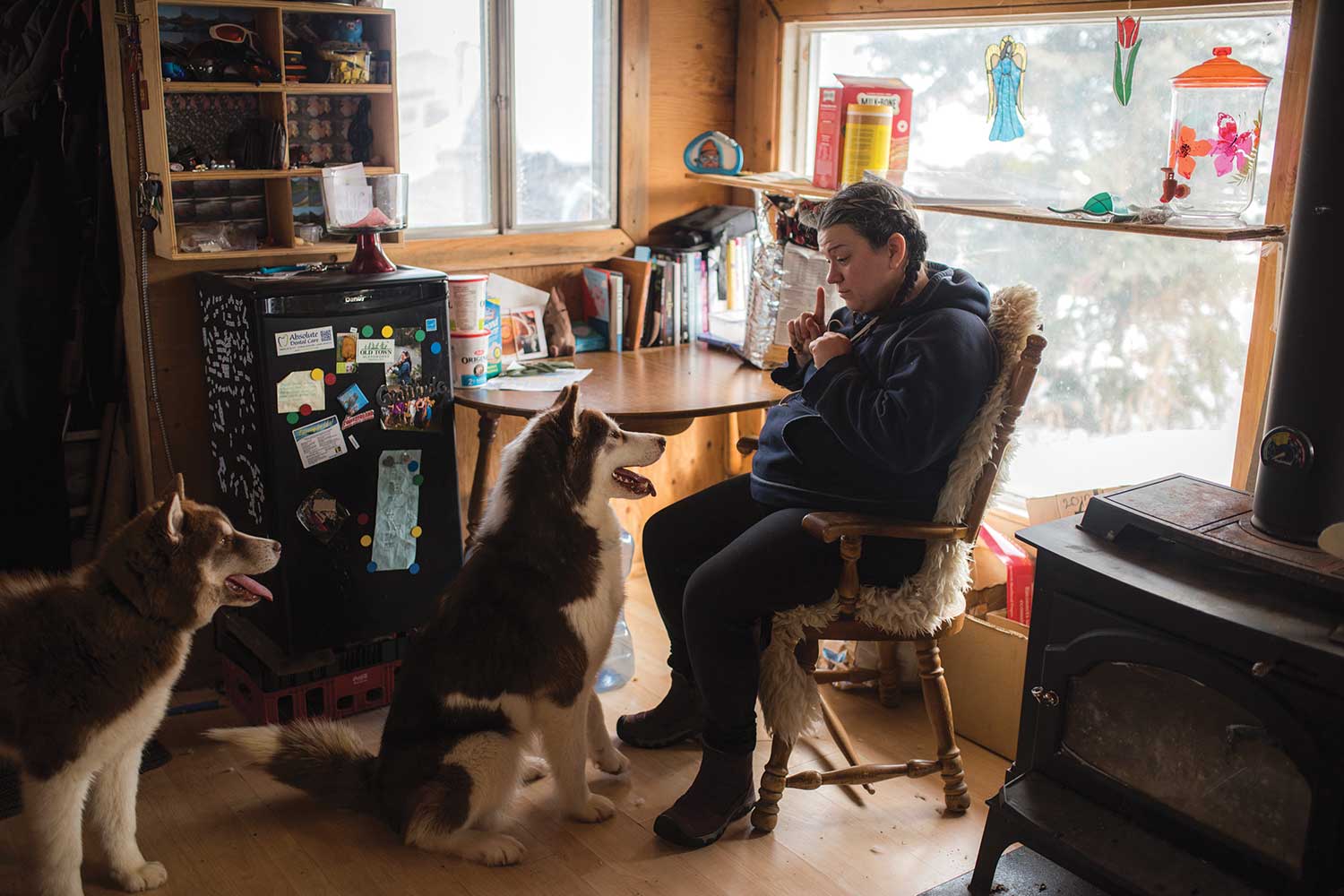
“We’re just getting back to basics,” says Miranda Currie, a musician who also works part-time as a teacher. She has lived in a 500-square-foot shack in the Woodyard, with electricity but no running water, for seven years. She showers at the Racquet Club up the street. Her heat comes from a wood stove. When I reach her on the phone, she’s fighting a cold, but the chores still have to be done. She doesn’t mind.
“The hard work is soothing,” she says. It’s not just the vigour of a swinging axe that pumps out the endorphins. Here, she can walk down to her dock and play her guitar in the midnight sun on a nice summer evening, or let her dogs pull her one-person sled across the ice when they wake her up howling at the northern lights. “I can’t imitate that in the city.”
⁂
At first blush, the Woodyard looks like a slum. Its ramshackle buildings are sinking into the thawing permafrost, a slow process that’s confirmed by the crazily sloping floors found indoors. Old trucks and buses decompose along the dirt roads, with weeds growing up through their floors.
Though these patchwork homes are distinct from the modern city that surrounds them, the shacks are relics of Yellowknife’s roots. Many were built by the miners and prospectors who moved to the territory of the Yellowknives Dene during the 1930s and 1940s, hoping to strike it rich. A few of them did, and moved on to more spacious and comfortable dwellings, while those who failed to find their fortune just moved on. Many shacks were torn down over the ensuing decades, but a few remain.
The houseboats, though much newer additions, vary similarly in “curb” appeal, from unfinished plywood to elegant and eclectic. Their occupants are good-naturedly known as “water squatters.” What they have in common with the shack dwellers is a dedication to simple, off-the-grid living, an independent streak that mirrors that of the city writ large.
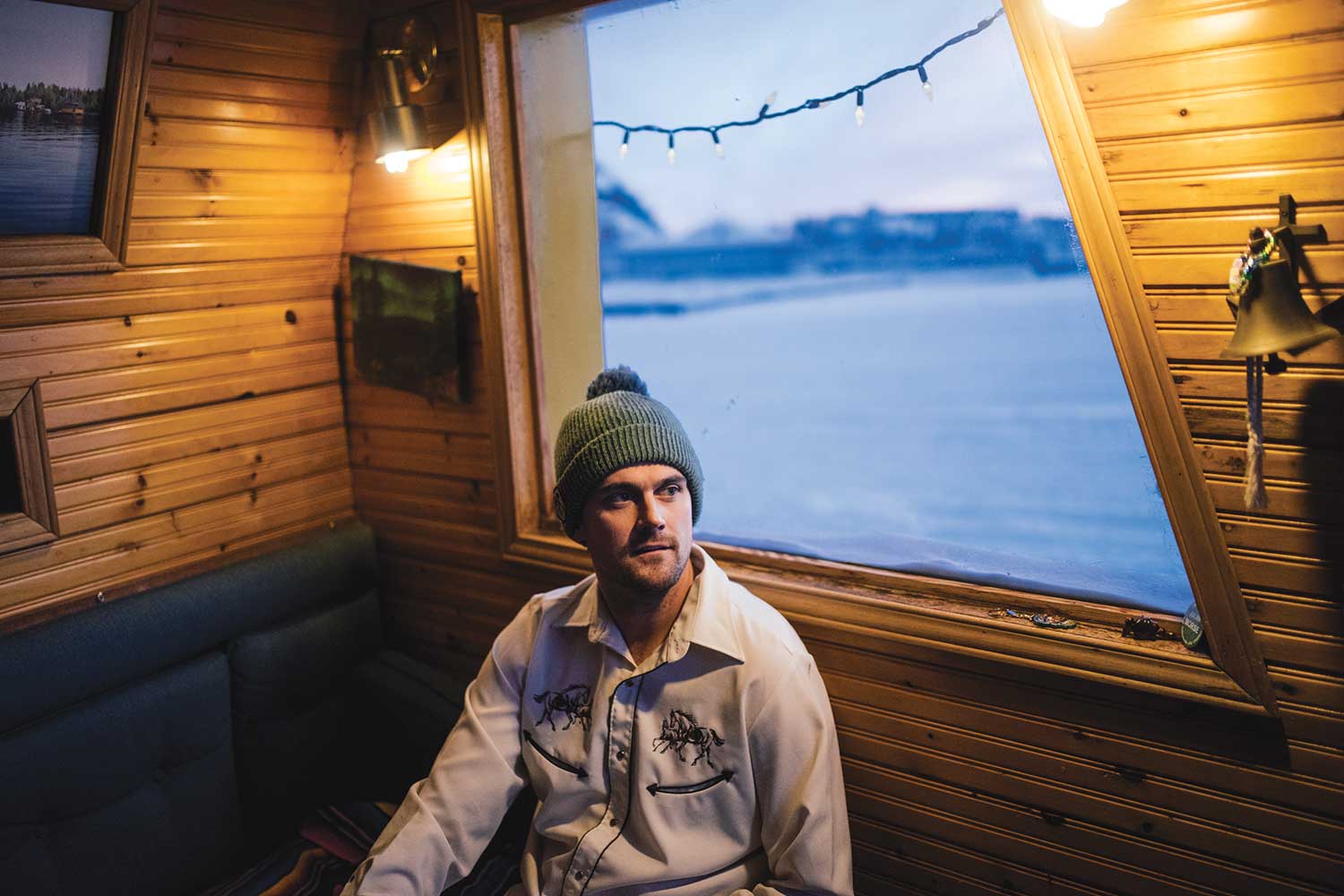
Twenty-nine-year-old Rylund Johnson is one of those people. Some combination of brash temperament, incisive wit, and willingness to be different likely contributed to his recent election as the youngest MLA in the territorial legislature.
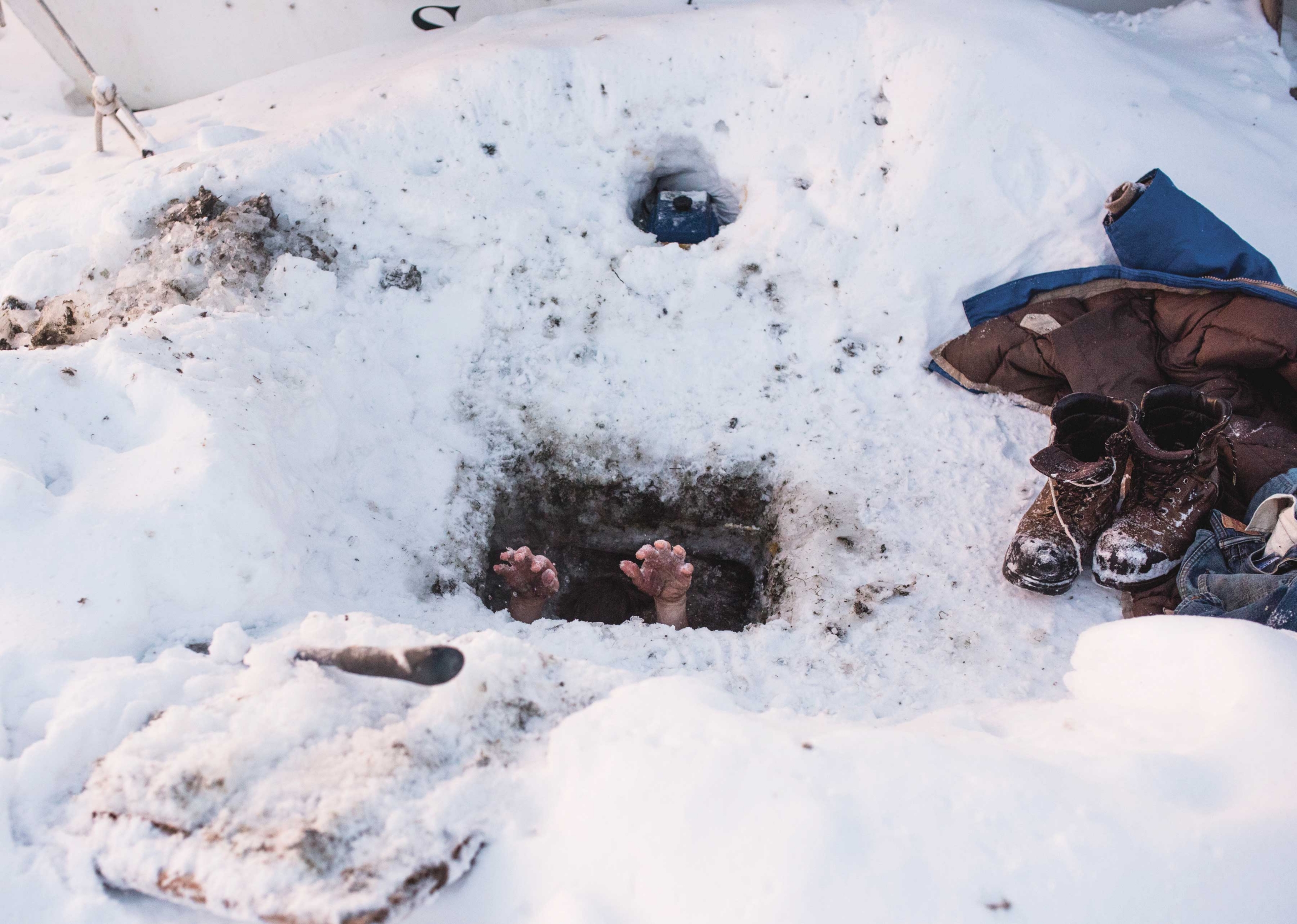
Having a houseboater who does not have to pay property taxes as an MLA rankled some of his new constituents. Johnson had, in fact, been on his way to traditional home ownership about a year and a half ago. But when the house he’d put a down payment on turned out to have structural problems, he put the money instead toward the Scandimaniac, a houseboat originally built for running the Mississippi.
Nobody is exiled into the Woodyard, or marooned on a houseboat. The area’s affordability—rents are often under $500 a month, in a city known for prices similar to Vancouver—is a perk, but it’s not the sole reason for being there.
“When you don’t know the Woodyard, it’s like, ‘Oh, look at these bums, living in these shacks,’” Currie says.
When she suffered a brain injury in a fall, her doctors (visitors from outside Yellowknife) refused to release her back into what they considered substandard housing; her mother, who normally declines to visit due to the rustic conditions, had to come take care of her. There have been concerted efforts in the past to bulldoze the district. But her neighbours are generally well educated and otherwise skilled, and, judging by their daily routines, they’re not averse to hard work. Most want to untangle their lives from the built-in compromises of being plugged into the grid, and, by extension, a life of ever-accelerating consumerism. As Currie put it, “My education has made me aware of my impacts on the earth more. I want to live simply.”
The shacks and houseboats have become protected, in practice if not in law, by the city’s affection for them—and, perhaps more importantly, by their fame among tourists, who have a bad habit of ignoring personal boundaries and peering in windows or even walking right in.
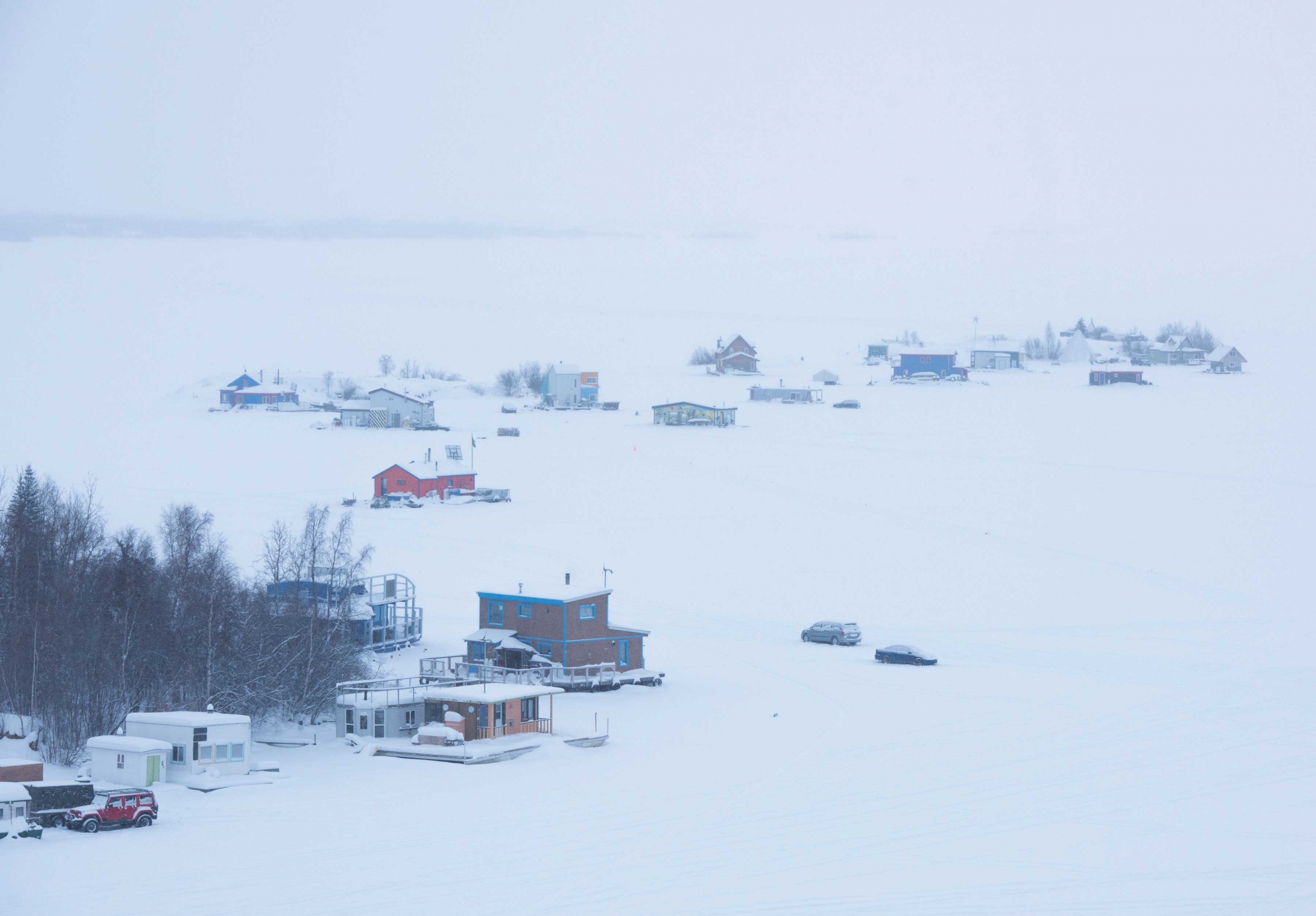
Nicole Goodman’s houseboat, which she shares with her partner, Brian Weadick, is one of the roomier ones on the bay. Goodman works on rotation at the Diavik diamond mine as an environmental technician, while Weadick, a beloved local musician, teaches music and helps at the brewery. Their house faces south, looking out toward the string of houseboats along Jolliffe Island and beyond, where Houseboat Bay joins Great Slave Lake. I boat-sat for the couple last winter, revelling in the way the low-angle light would blaze along the icy lake’s surface each morning.
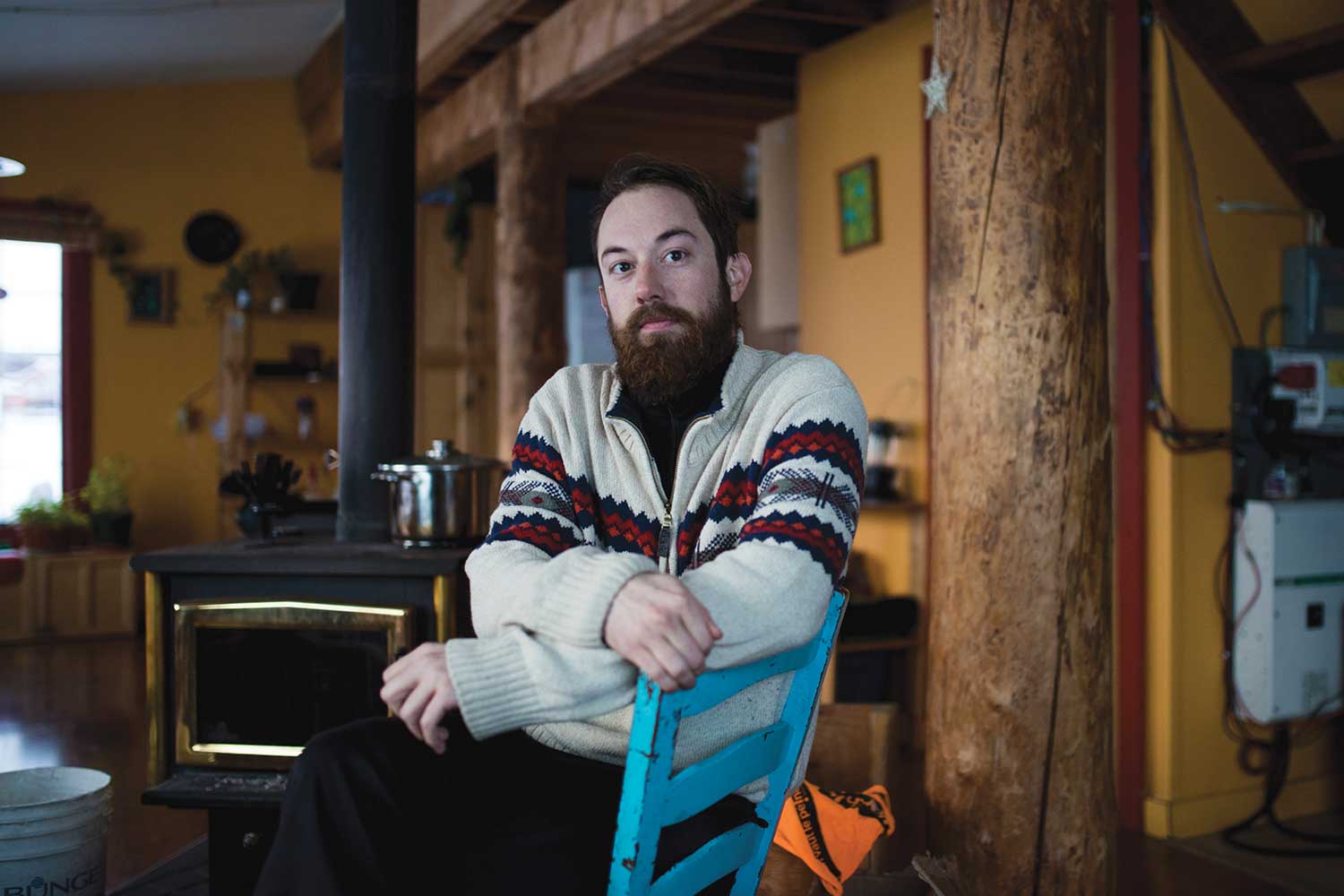
On a windy day, the boat heaves in the swell. That kind of movement, Goodman usually doesn’t mind (except when it’s so extreme that pictures fall off the walls). But the disruption brought about by the wake of boats bearing a dozen gawking tourists is another story—or maybe it’s mostly the cameras that bother her.
Yellowknife’s tourism industry has exploded in recent years, owing mostly to the northern lights, but that attraction has spun off into a handful of other businesses, like boat tours through Houseboat Bay. Urban tourists, perhaps never having seen such rustic and wild places, delight at sights as commonplace to locals as a canoeist or a big northern dog. For those on the other side of the whirring lenses, however, it can wear thin.
“There was a whole boatful of people peering in my living room window,” Goodman recalls of a day this summer. “I tried to give them the finger, but they didn’t know what it meant, and they just waved back.”
Still, a million-dollar view on an extreme saver’s budget is naturally going to involve some compromise. As Goodman will tell anyone who will listen, spending less is as good or better than earning more. Her abundance of spreadsheets—and the 20 pounds of dumpster-dived apples simmering on the stove when we speak over the phone—offer the proof.
“It feels like a little bit of an adventure,” she says. “A very accessible, beginner-level adventure.”
⁂
Lots of people, it seems, crave that kind of adventure. Old Town and its variety of off-the-grid housing is the most sought-after place to live for the young people who flock to Yellowknife. The community turn out in droves when there’s an event going on, like the Snow Castle, which dominates the month of March as the best music venue in the city.
Tony Foliot, better known as the Snow King, has spent every February for 25 years building the magnificent ice castle behind his houseboat on Houseboat Bay with help from an army of builders. Most of them are shack dwellers and houseboaters, coming together to make something, temporarily, bigger than themselves.
“The community becomes—even though everyone’s a radical individualist in a way—very supportive,” says Johnson.
That goes in good times and bad. On a stormy September day, one houseboat’s anchor lines snapped in the wind and waves. Within minutes the neighbours organized themselves to secure the boat, vulnerable to crashing against the shore and being destroyed. In more peaceful moments they chip in as well, loaning tools or helping to repair a float or participating in one of the plethora of local traditions.
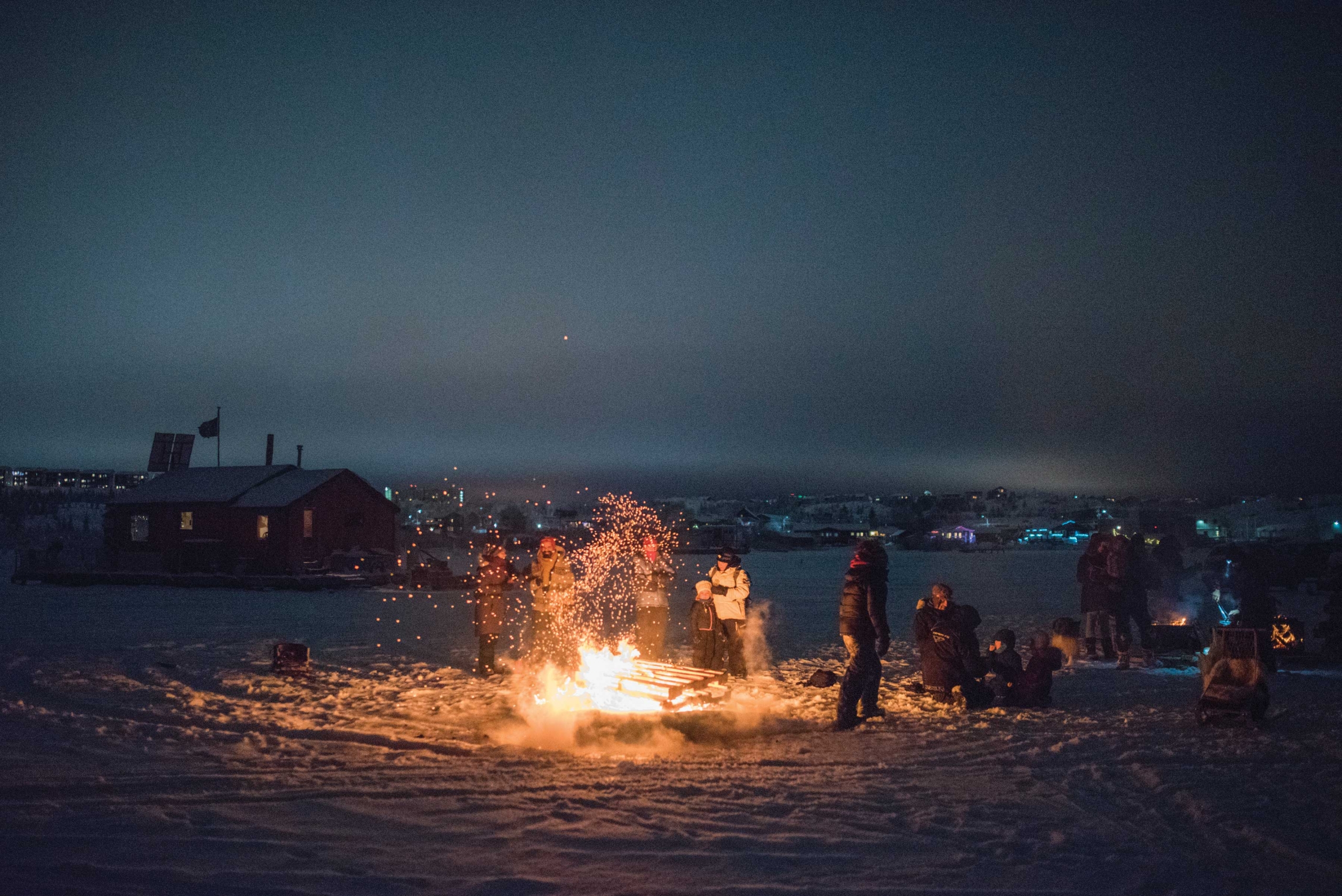
The Old Town Pond Sailors Regatta is one such tradition.
On a grey August day, the Snow King bellows at a crowd of well over 100 Old Towners through a makeshift PA system on the government dock. They mill about with their model boats, many of which are also decidedly makeshift: made from styrofoam, plastic, and pool noodles. On his mark, they push them out into the lake.
Blown by a gentle breeze, the boats bob in the bay, which has acted as the focal point for off-the-grid Yellowknifers for nearly a century—long before “off-the-grid” was optional.
Some wooden boats, polished and expensive, cruise sluggishly along, their cloth sails full of wind. It’s immediately clear which boats thrive in this environment: neither the prettiest, nor the finest. Soon, a front-runner emerges: a salvaged foam hull and taped-up plastic sail carry it away from the crowd, and it slips easily past the finish line.
Jimmy Thomson is a journalist based in Victoria, BC, where he recently moved from Yellowknife to escape the long winters and ride his bike more. Unlike Jimmy, his northern dog Glenn misses the snow.
Pat Kane is a photographer in Yellowknife, NWT, covering people, life, and environment in Canada’s Far North. He is an Algonquin Anishinaabe member of the Timiskaming First Nation on the territory that is now Québec, and part of the international Indigenous photo collective Natives Photograph.